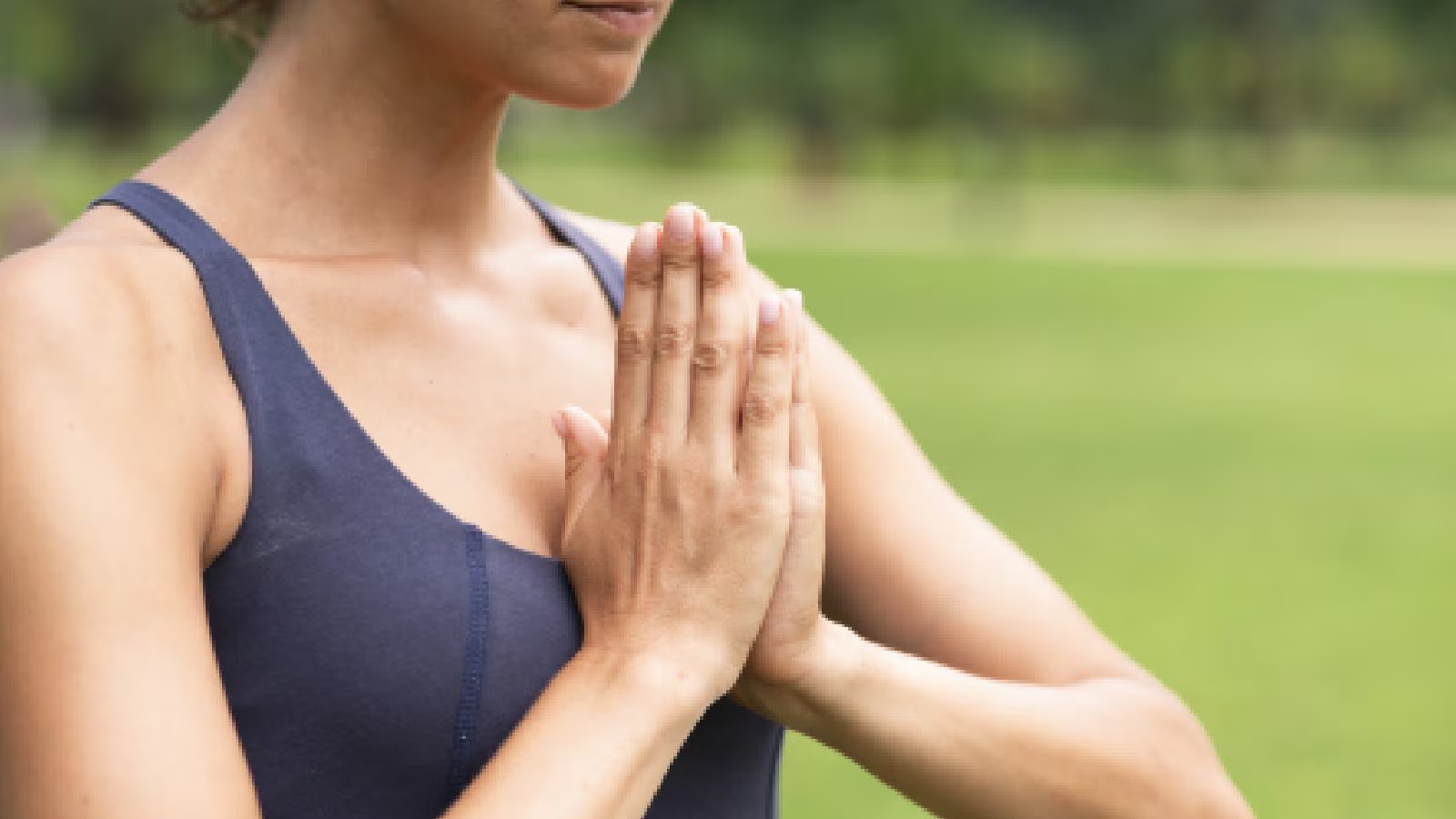
The monsoon season brings cool breezes, fresh air, and beautiful greenery. It also brings high humidity, damp surroundings, and less sunlight. Many people feel low energy and discomfort during this time. Regular outdoor exercise becomes difficult due to rain. But yoga offers a perfect solution. It can be done indoors, requires little space, and helps you stay fit, calm, and healthy.
In this article, we explore how indoor yoga can help you stay active during monsoon days. We also suggest simple routines and tips for maximum benefit.
Why Yoga is Ideal in the Monsoon Season
Monsoon weather can affect your health. The damp air slows digestion, increases joint stiffness, and weakens the immune system. You may also feel low in mood and energy. Yoga helps in all these areas.
- It boosts immunity.
- It improves blood circulation.
- It keeps the joints and muscles flexible.
- It balances the nervous system.
- It lifts your mood and reduces stress.
The best part is that yoga can be done safely at home, without any special equipment.
How to Create a Safe Indoor Yoga Space
Before you begin, prepare a clean and dry space in your home.
- Choose a corner with good ventilation.
- Use a yoga mat that does not slip.
- Keep a towel nearby in case of sweat or dampness.
- Make sure the floor is not wet.
- Remove any furniture or sharp objects nearby.
Good lighting and fresh air make the space more peaceful and inviting.

Gentle Warm-Up and Simple Asanas
Start with light stretches to warm up the body. Begin with neck rolls, shoulder circles, and side stretches. Then move to a gentle flow of asanas (yoga poses).
Recommended Asanas for Monsoon:
- Tadasana (Mountain Pose)
Improves posture, balance, and awareness. - Vrikshasana (Tree Pose)
Enhances balance and strengthens legs. - Trikonasana (Triangle Pose)
Stretches the sides and improves digestion. - Bhujangasana (Cobra Pose)
Opens the chest and strengthens the spine. - Utkatasana (Chair Pose)
Builds leg strength and tones muscles. - Paschimottanasana (Seated Forward Bend)
Calms the mind and stretches the spine and hamstrings. - Balasana (Child’s Pose)
Provides deep relaxation and relieves stress.
Hold each pose for 30 seconds to 1 minute. Repeat the full sequence for 15 to 20 minutes.
Breathing Exercises (Pranayama)
Breathing practices are especially helpful during the monsoon. They clear the lungs, improve oxygen flow, and calm the mind.

Read more: Unlock Explosive Gains with Progressive Overload: The Key to Constant Muscle Growth
Suggested Pranayama:
- Anulom Vilom (Alternate Nostril Breathing)
Balances the mind and reduces anxiety. - Bhramari (Bee Breath)
Soothes the nervous system and supports mental focus. - Nadi Shodhana (Energy Channel Cleansing Breath)
Purifies the breath and improves lung function.
Avoid cooling pranayamas like Sheetali and Sheetkari during this season, as they can make the body feel too cold.
Practice pranayama for 5 to 10 minutes after asanas.
Cool Down and Restorative Poses
After active poses and breathing, cool down with gentle, restorative yoga.
- Setu Bandhasana (Bridge Pose)
Opens the chest and supports spinal health. - Legs-Up-the-Wall Pose
Helps with blood circulation and reduces swelling in the legs. - Shavasana (Corpse Pose)
Final relaxation pose. Calms the body and mind.
Lie down in Shavasana for 5 to 10 minutes. Focus on your breath and let your body relax completely.
Sample Indoor Yoga Schedule for Monsoon
Here is a simple plan you can follow:
| Time of Day | Activity | Duration |
|---|---|---|
| Morning | Asana practice + light flow | 20 minutes |
| Midday / Noon | Breathing exercises (Pranayama) | 10 minutes |
| Evening | Gentle stretches + meditation | 15 minutes |
Even on busy days, you can do just 10 minutes of practice to feel refreshed and focused.
Ayurvedic Tips to Support Your Yoga Practice
According to Ayurveda, monsoon is a time when digestion becomes weak. The body can accumulate toxins due to humidity and irregular eating habits.
Here are some simple Ayurvedic suggestions:
- Drink warm water or herbal teas (like ginger, tulsi, or cinnamon).
- Use spices like turmeric, cumin, black pepper, and ajwain in your cooking.
- Avoid oily, fried, or stale foods.
- Eat light, home-cooked meals using seasonal vegetables.
- Add amla (Indian gooseberry), methi, bottle gourd, and bitter gourd to your diet.
- Do not sleep during the day, as it can slow down digestion.
- Keep your feet dry to avoid fungal infections.
Pairing these tips with yoga helps keep your body light, warm, and clean from the inside.
Mindfulness and Meditation for Rainy Days
The sound of rain can be calming. It is a good time to practice mindfulness and meditation.
- Sit quietly and listen to the sounds around you.
- Focus on your breath.
- Allow your thoughts to come and go without judgement.
- You can chant “Om” or use a simple mantra to guide your mind.
Even five minutes of silent sitting can give deep peace and improve your focus for the rest of the day.
What to Expect After a Week of Regular Practice
With daily yoga, you will begin to notice changes in your body and mind:
- Better digestion and less bloating
- More flexible joints and stronger muscles
- Calm and focused mind
- Stronger immunity
- Better sleep and improved mood
You do not need to do complex poses. Even simple movements, done regularly, bring strong results.
Final Tips and Safety Precautions
- Always warm up before beginning asanas.
- Use a stable mat to avoid slipping.
- Wear light, breathable clothes.
- Avoid practice if you have fever or a serious illness.
- If you are pregnant or have any medical condition, consult a doctor or trained yoga teacher before starting.
Conclusion
Monsoon does not have to stop your fitness journey. Yoga is a perfect indoor exercise for this season. It keeps your body healthy and your mind calm. With a little space and commitment, you can enjoy the benefits of yoga every day—even when it’s raining outside.
Make this monsoon a time of healing, strength, and balance. Roll out your mat and begin the journey within.
Author: Sonam










